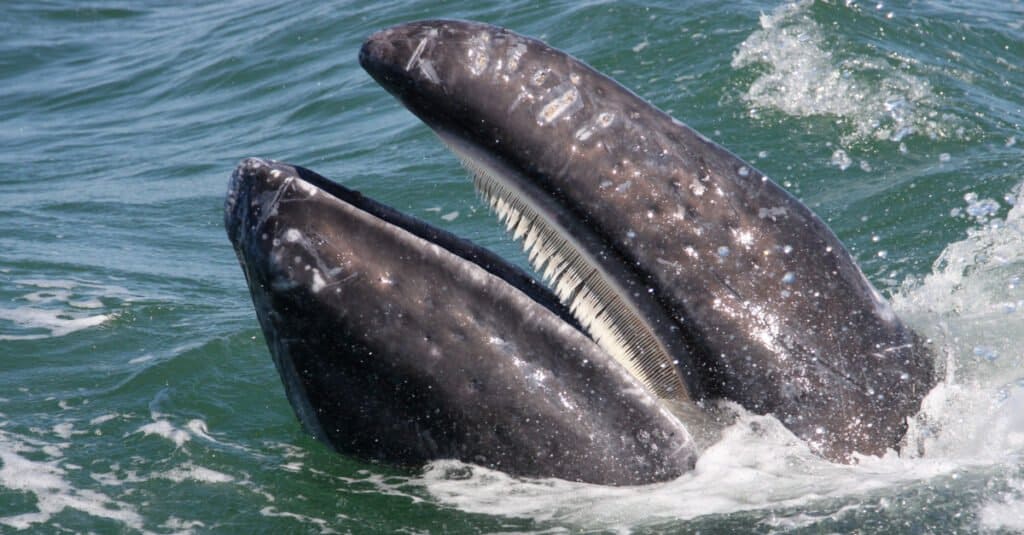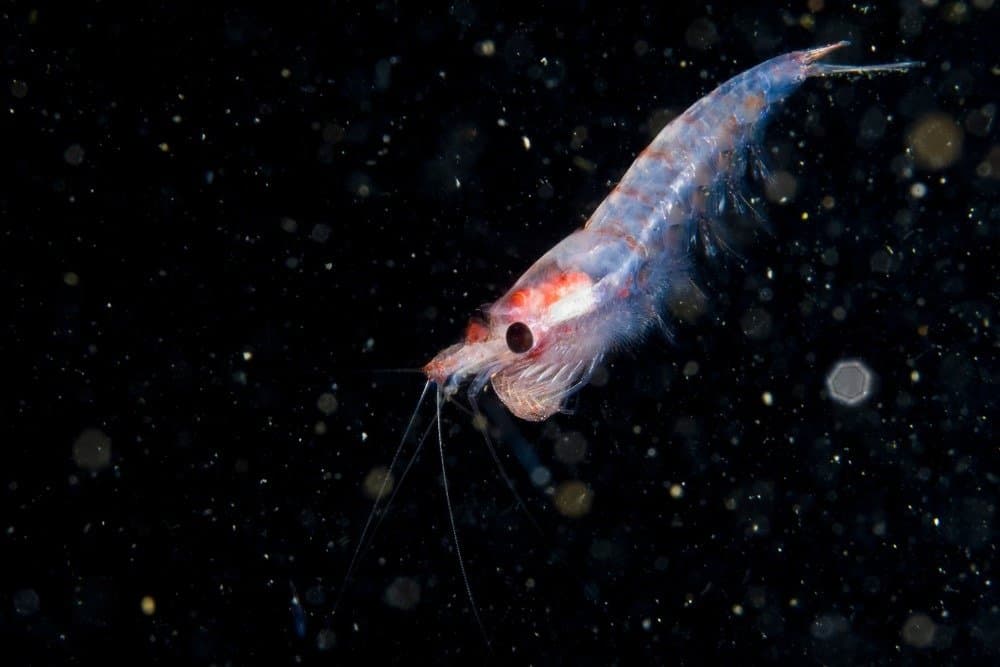Key Points
- Gray whales are the only species of bottom-feeding whale, as they receive their sustenance from the seafloor.
- Gray whale teeth are called baleen plates, and these plates filter out excess water and mud from the whale’s mouth when feeding.
- Did you know that gray whales migrate? While only two populations are still in existence, members of this species can be found along the coasts of Alaska, Washington, and Oregon in summer and near Baja California, Mexico in winter.
In this incredible video, a gray whale flashes its teeth at a nearby kayaker. At the beginning of the video, a humongous gray whale approaches a boat, opens its mouth, and shows off its innumerable teeth. Onlookers gasp in awe at the whale’s beauty and reach their hands out to touch it.
The gentle whale lets the tourists pet its head, thoroughly enjoying human attention. According to the video, this whale encounter took place in Baja California, Mexico. The cameraman, a marine biologist, had been guiding a trip of kayakers when the gray whale approached them.
Check Out The Entire Video Below!
Where Do Gray Whales Live?
Gray whales are found in the North Pacific Ocean, and only two populations of the species remain. One population is found in the eastern portion of the North Pacific Ocean, while the other population lives in the west.

Gray whales migrate along the western coast of North America throughout the year to feed or mate.
©Travis Potter/Shutterstock.com
Gray whales migrate according to the season. For instance, gray whales near the United States feed along the coasts of Alaska, Washington, Oregon, and Northern California during summer. During fall, though, these creatures migrate to Baja California, Mexico. In addition, females may give birth along Mexico’s coast during winter. As spring approaches, gray whales will head northward in preparation for summer feeding.
All About Gray Whale Teeth

Notice the baleen plates hanging from the upper jaw of this gray whale. They have 130-180 plates!
©jo Crebbin/Shutterstock.com
One interesting fact about the gray whale is that it doesn’t actually have teeth! What we refer to as “teeth” in the mouth of the gray whale are called baleen plates or baleen. Baleen is made of keratin and hangs from the roof of the gray whale’s mouth. Gray whales possess between 130 and 180 baleen plates that hang from their jaw.
How Do Baleen Plates Work?

Amphipods, such as krill, comprise many whale species’ diets, including that of the gray whale.
©RLS Photo/Shutterstock.com
To understand how baleen plates function, we must take a look at gray whale feeding behavior. Gray whales are the only bottom-feeding whales. When gray whales feed, they dive to the seafloor, turn on their side, and graze over the mud and sand.
During this process, they open their jaws and pick up sediment in their mouths. When they close their jaws, gray whales push excess sediment and water through their baleen plates, leaving behind small organisms called amphipods. Gray whales then swallow amphipods, which comprise a large part of their diet.
Is it Normal for Gray Whales to Surface?

Gray whales surface every 5 minutes or so when eating and every 20 seconds when swimming fast.
©ilyaska/iStock via Getty Images
The answer is yes! Gray whales are an active species, so it’s normal for them to surface frequently. They may also be spotted breaching (jumping) or spy hopping (popping their heads out of the water). The average gray whale can dive up to 1,640 feet and stay underwater for up to 10 minutes. They most commonly surface every three to five minutes to breathe. When they are swimming quickly and using a lot of energy, they might surface every 20 seconds or more.
Surfacing behavior helps these whales breathe air and communicate with one another through loud vocalizations. It also allows them time to rest since they must continuously move in order to stay afloat. Gray whales are also known to “log” at the surface, which is when they remain motionless and partially submerged while sleeping or resting.
The photo featured at the top of this post is © Mogens Trolle/Shutterstock.com
Thank you for reading! Have some feedback for us? Contact the AZ Animals editorial team.







